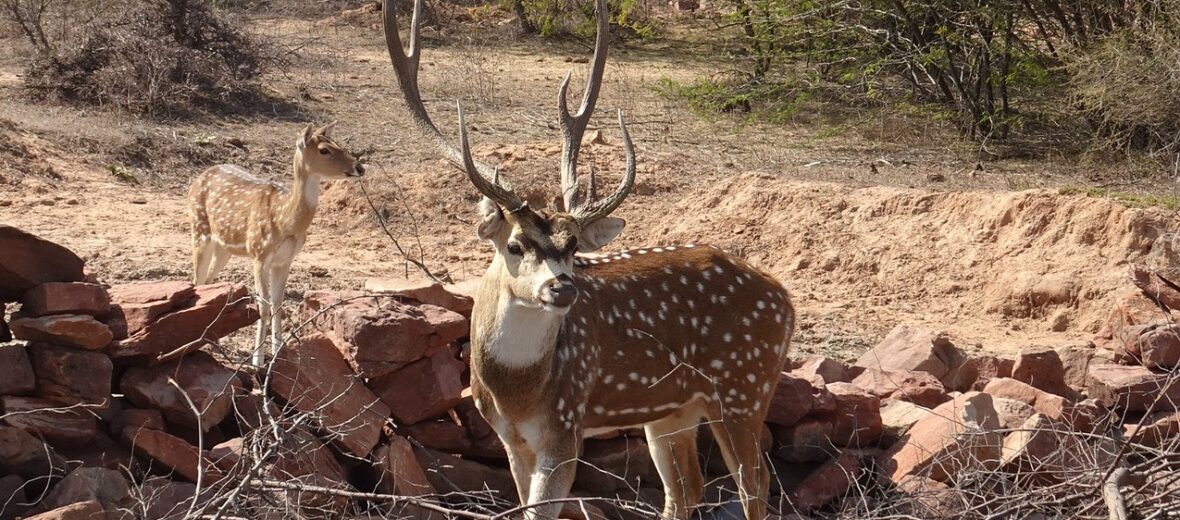
Concentrated throughout India, the chital deer, aka axis deer or spotted deer, is commonplace in the tropical dry forests, open grasslands, semi-evergreen forests, tropical moist forests, deserts, and xeric scrublands. They have been introduced to Argentina, Armenia, Australia, Brazil, Croatia, Moldova, Pakistan, Papua New Guinea, Ukraine, United States, to name a few. Due to their numbers, these deer are listed as Least Concern by the IUCN.
First the Stats…
Scientific name: Axis axis
Weight: Up to 175 lbs.
Length: Up to 5 feet, plus up to a 10 inch tail
Height: Up to 3 feet
Lifespan: Up to 20 years
Now on to the Facts!
1.) Herds can contain up to 50 animals; a handful of stags and numerous does, including offspring from up to 2 years past.
2.) Chital deer are diurnal (active during the day).
3.) Males are sexually dimorphic, as males are not only larger than females, but also sport antlers.
4.) Their antlers are up to 3.3 feet long.
5.) Axis deer eat grasses, sedges, flowers, mushrooms, and fallen fruit.
But wait, there’s more on the chital deer!
6.) Chitals are polygynous (males mate with more than 1 female).
7.) Their primary predators are leopards, dholes, and tigers.
Did you know…?
In Texas, this species is often problematic with regards to their interaction with agriculture in that they often cause millions of dollars in crop damage annually.
8.) Females birth 1 – 2 fawns each season, after up to a 225 day gestation (pregnancy).
9.) They often graze near trees that have langurs in them. Seeing as langurs have a habit of dropping fruit and can warn of predators.
10.) When a predator approaches, the females and young deer will often produce a barking noise to alert the others of danger.
Now a Short Chital Deer Video!
Also, check out the Critter Science YouTube channel. Videos added frequently!
Want to suggest a critter for me to write about? Let me know here.



